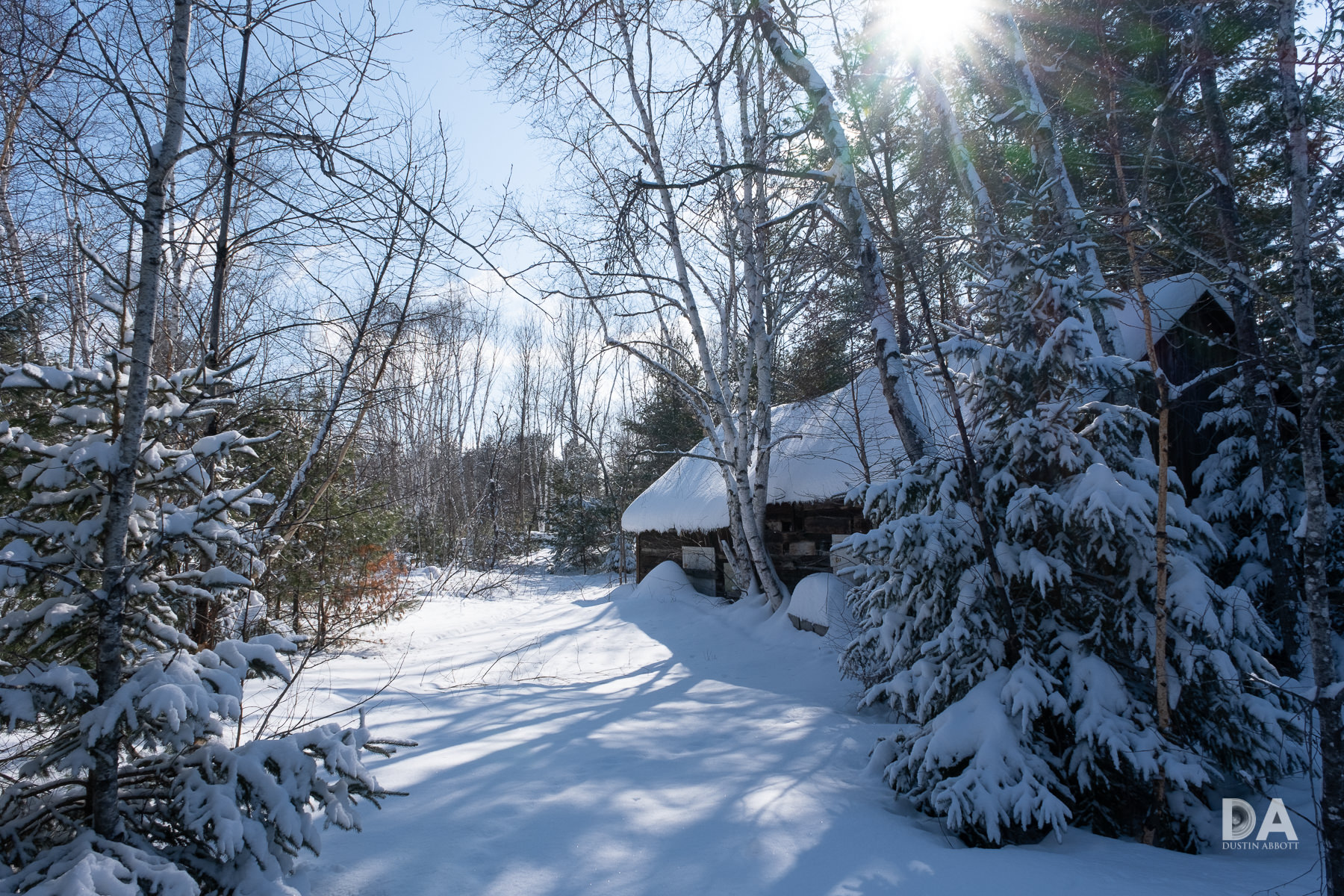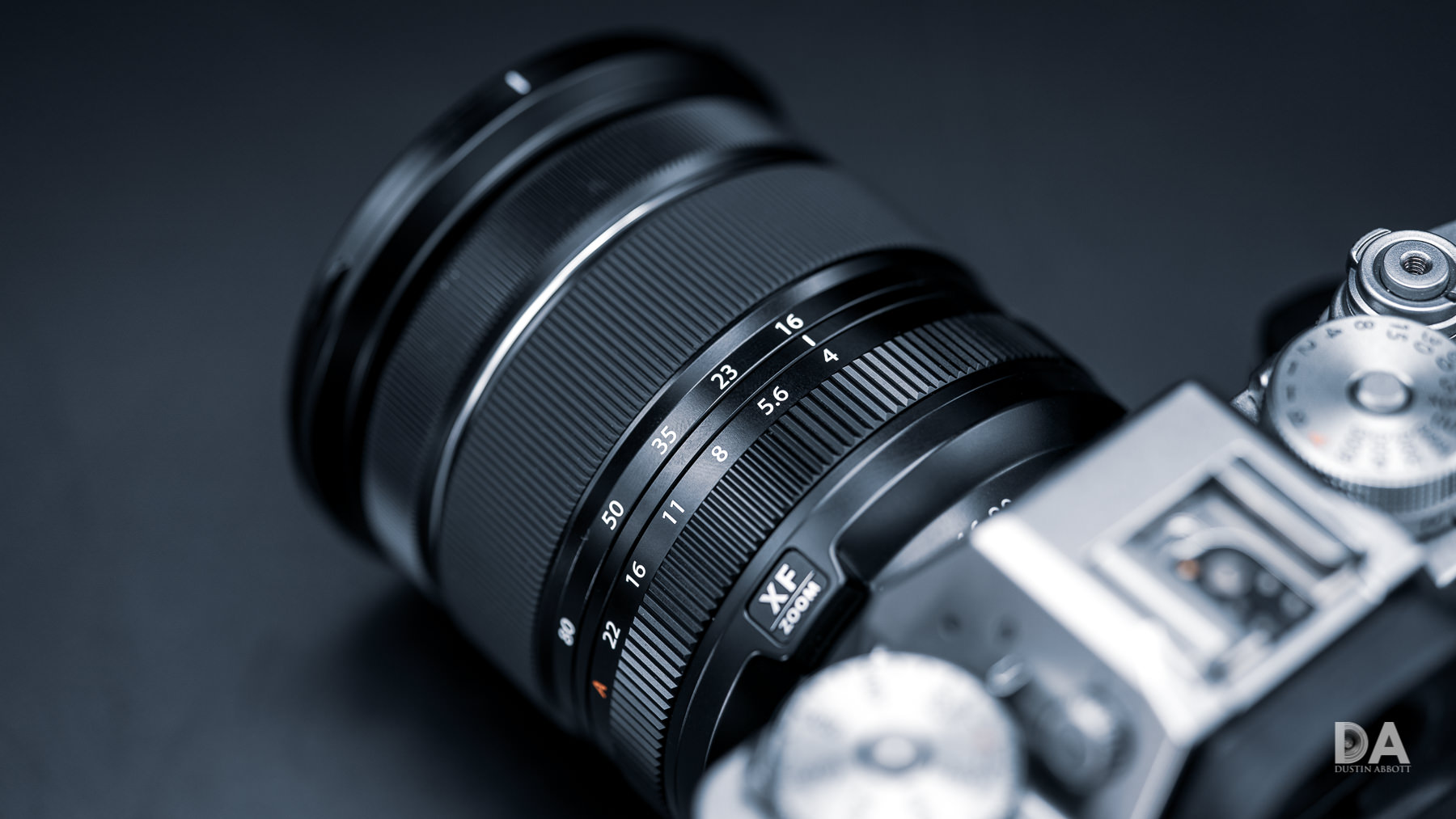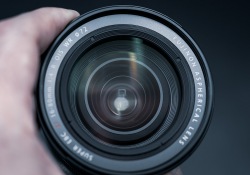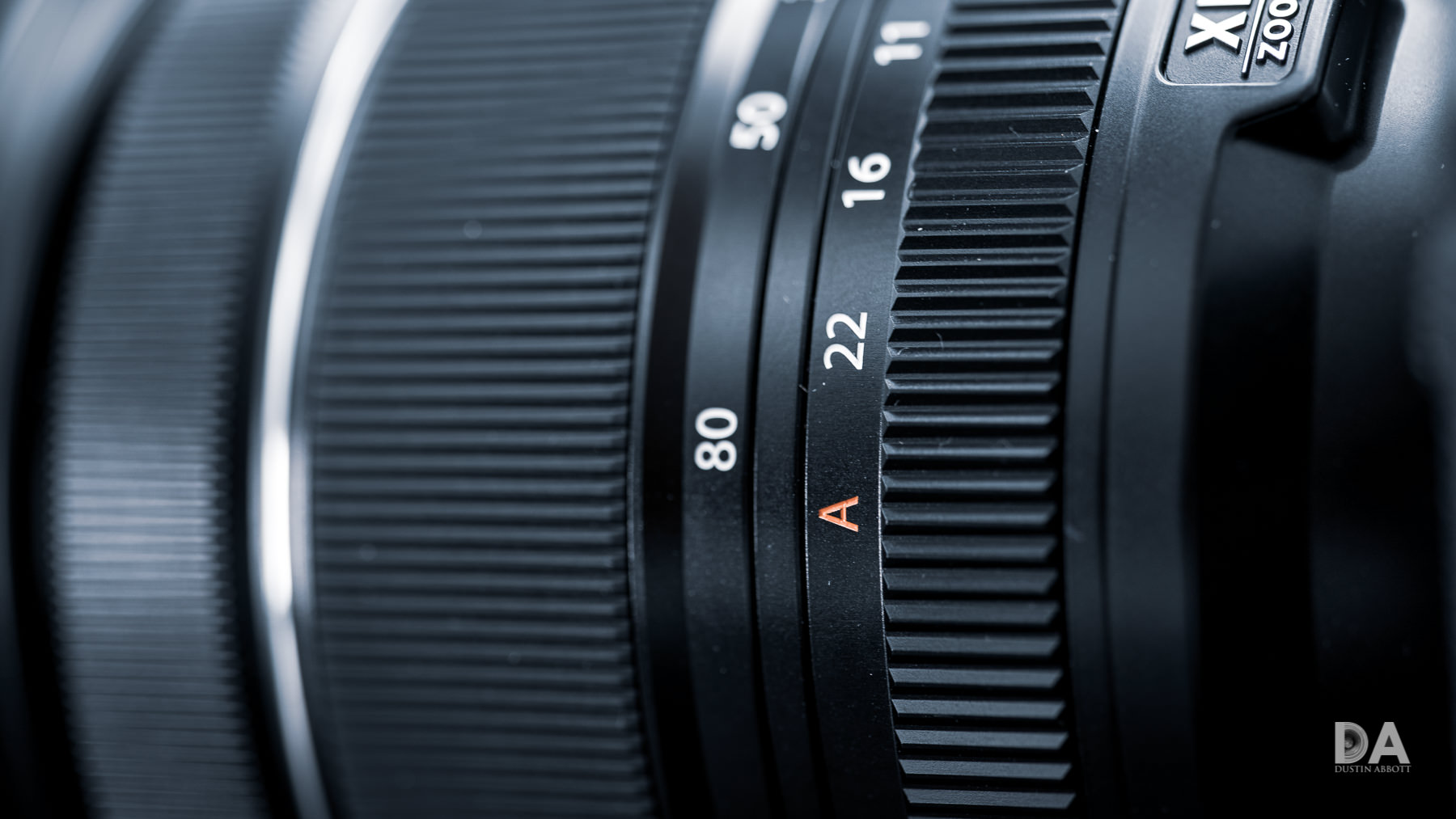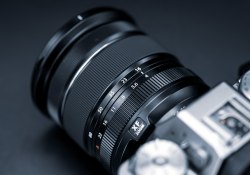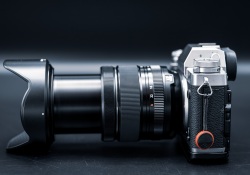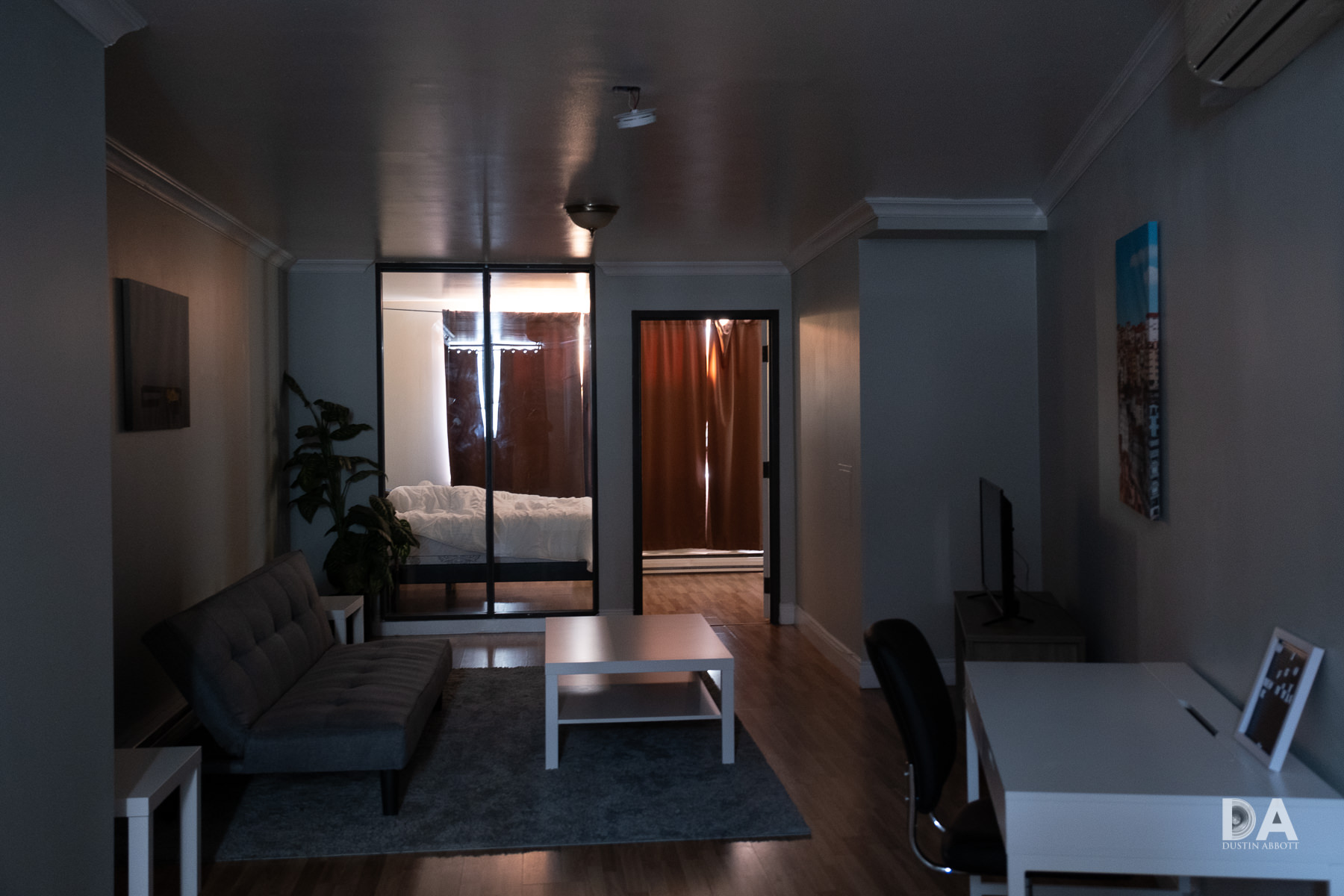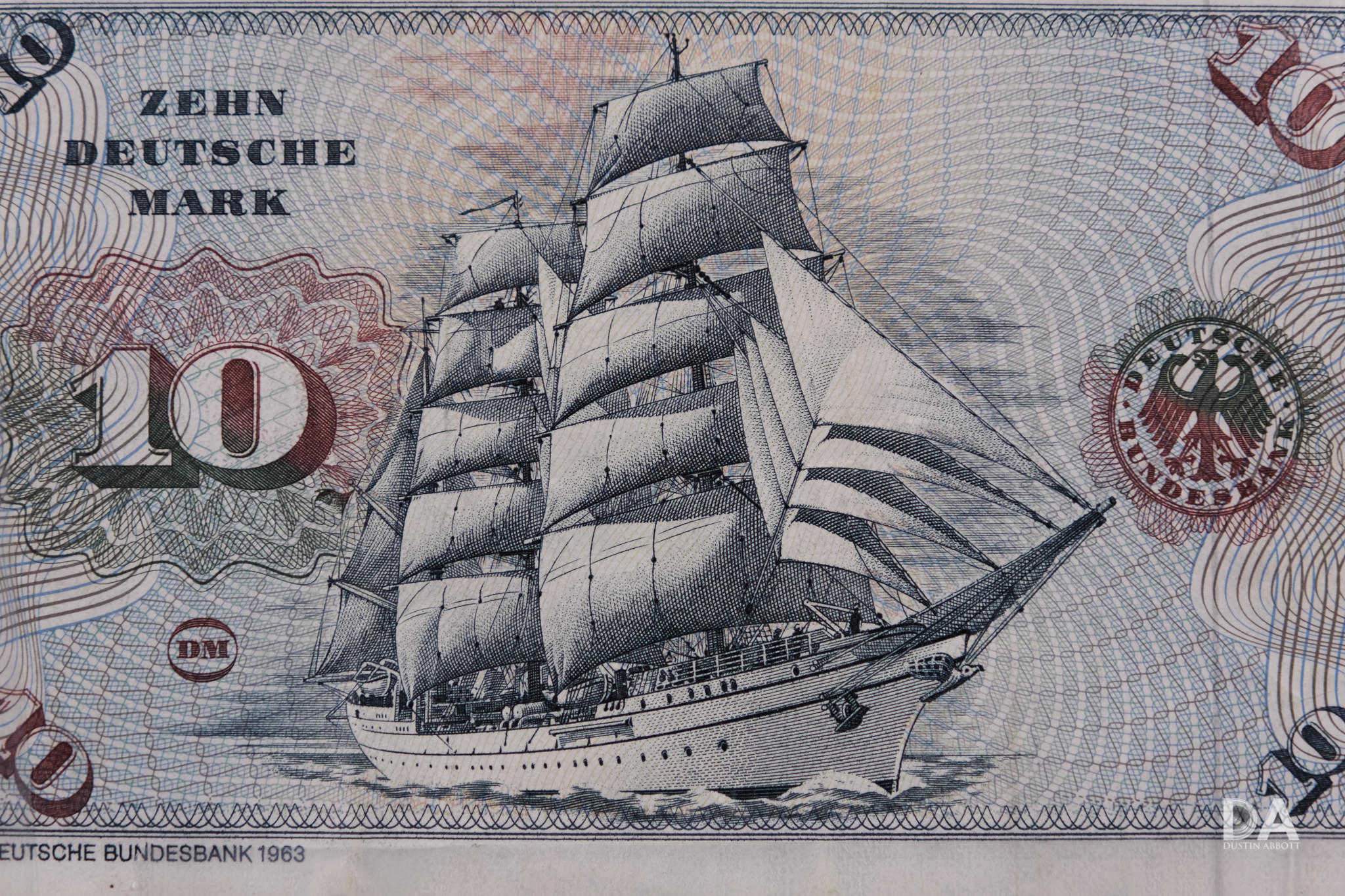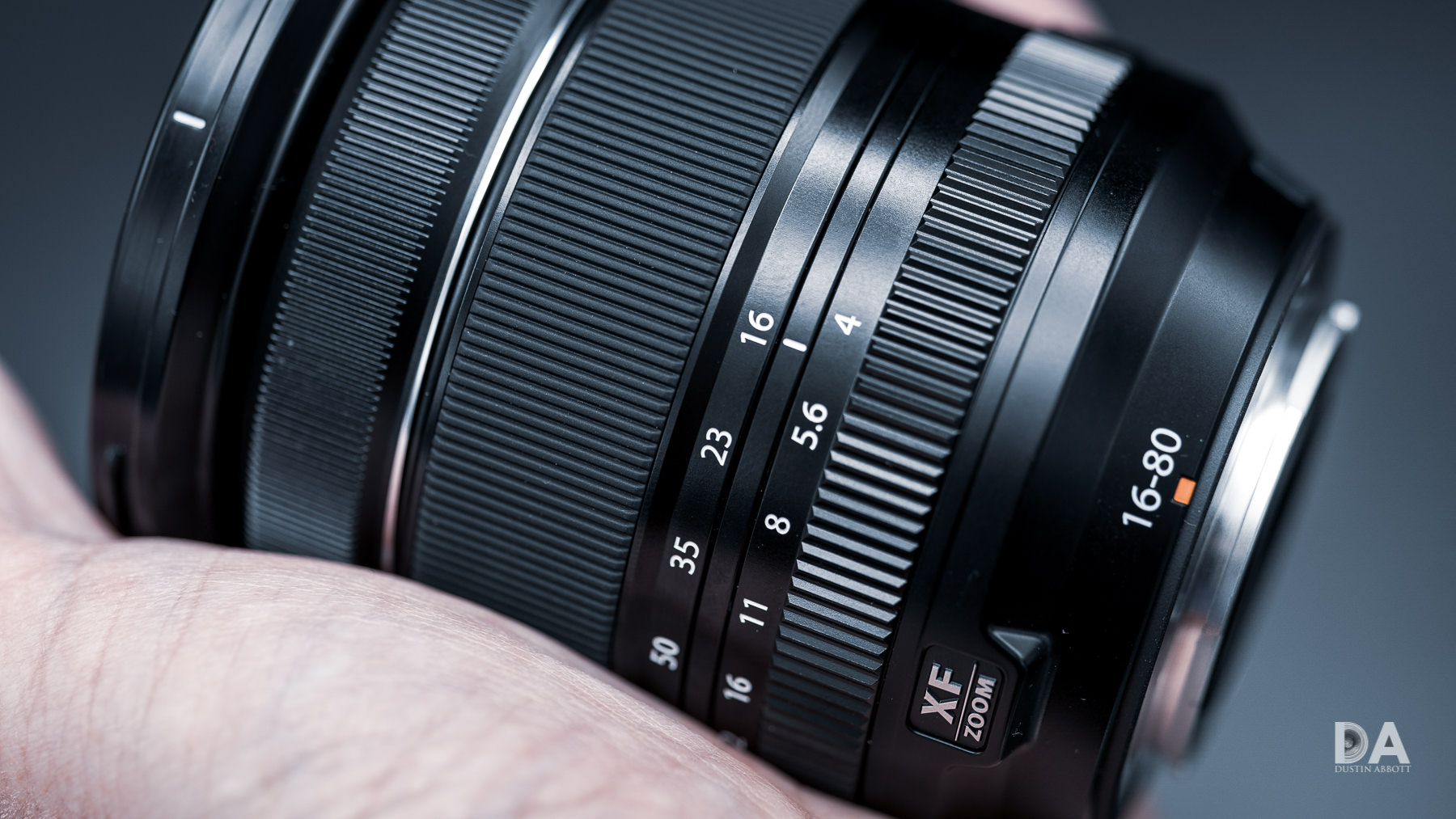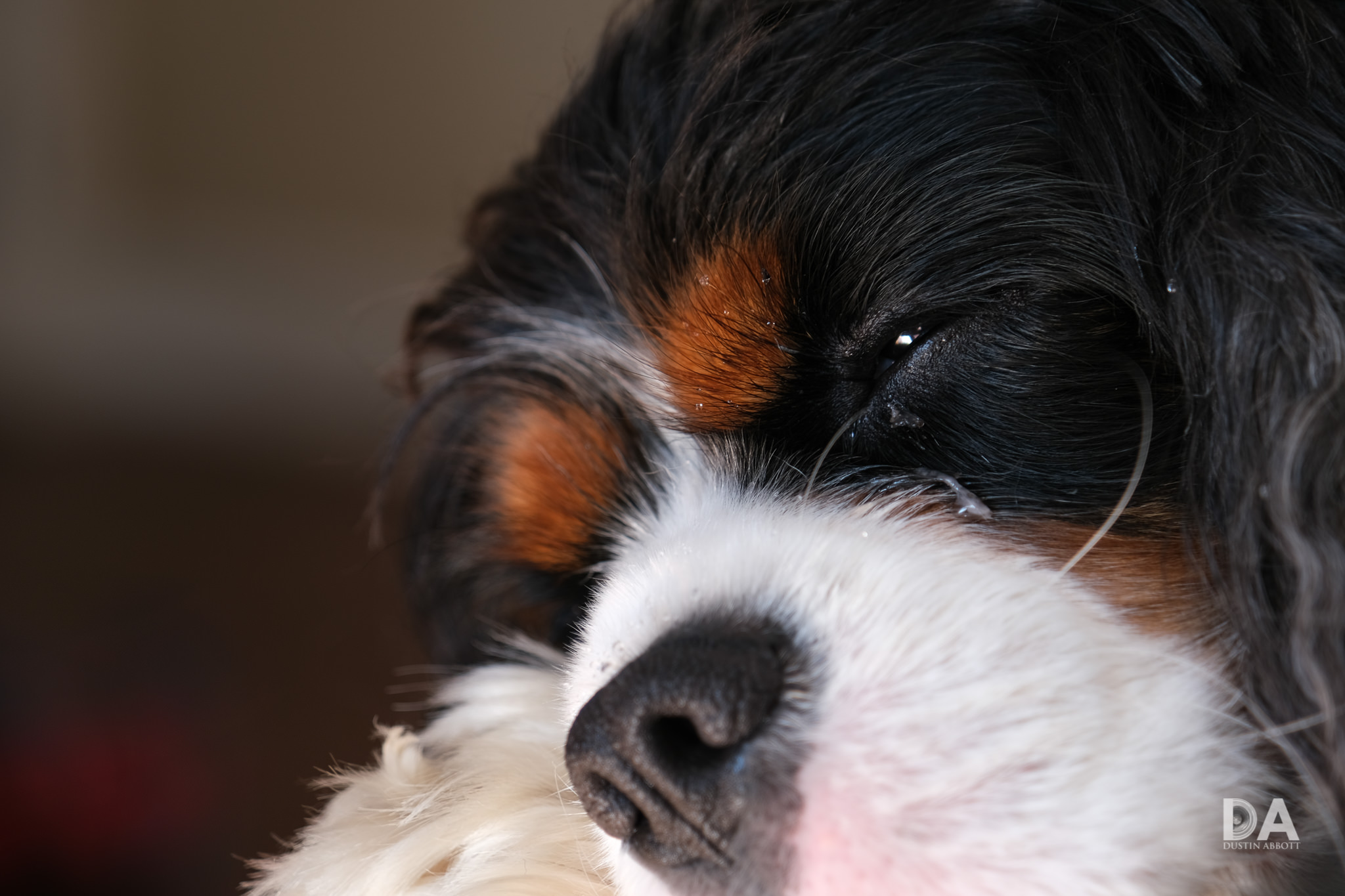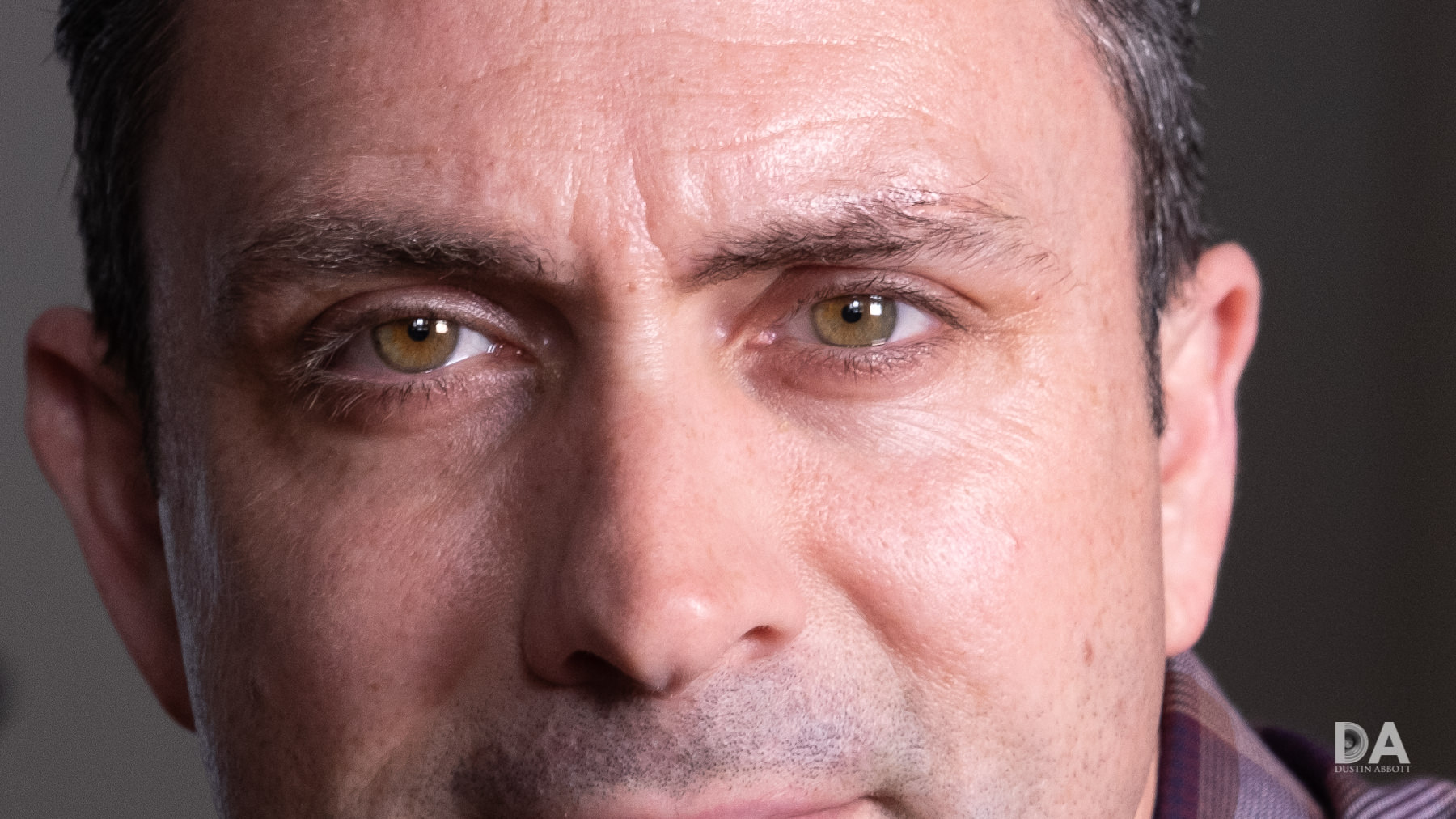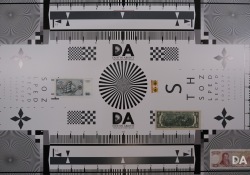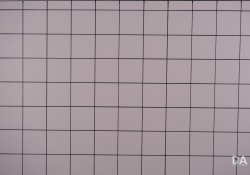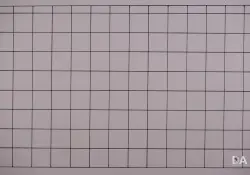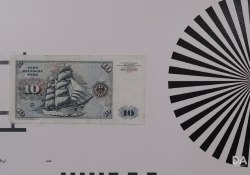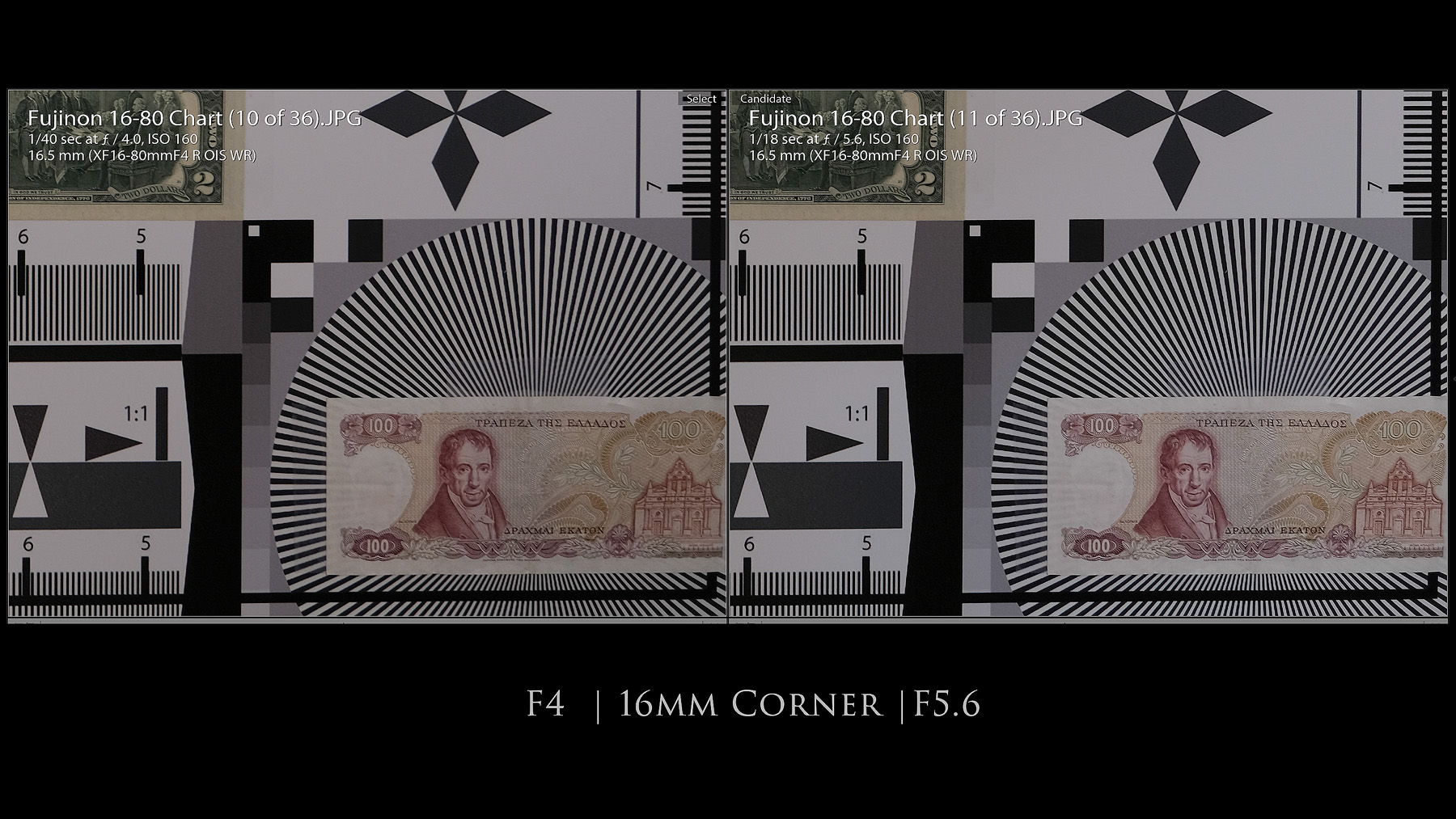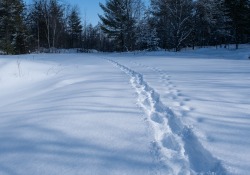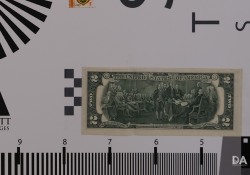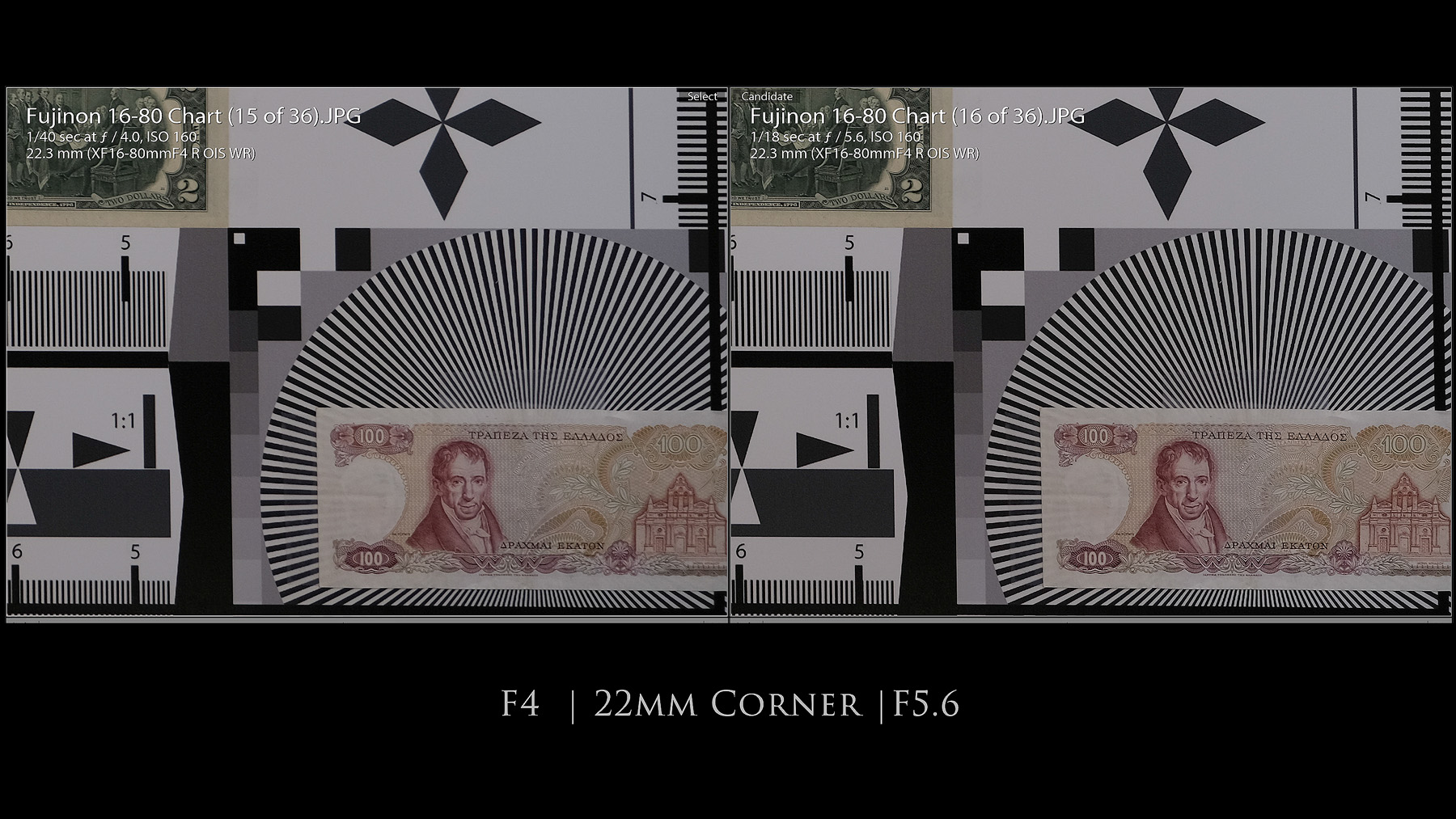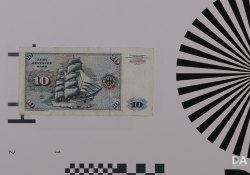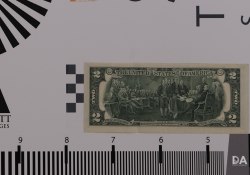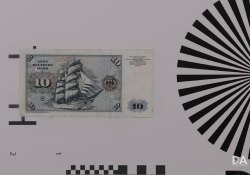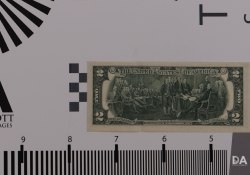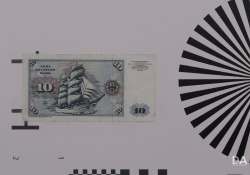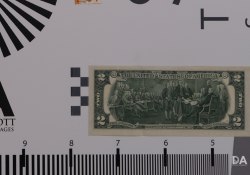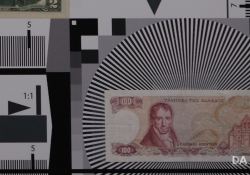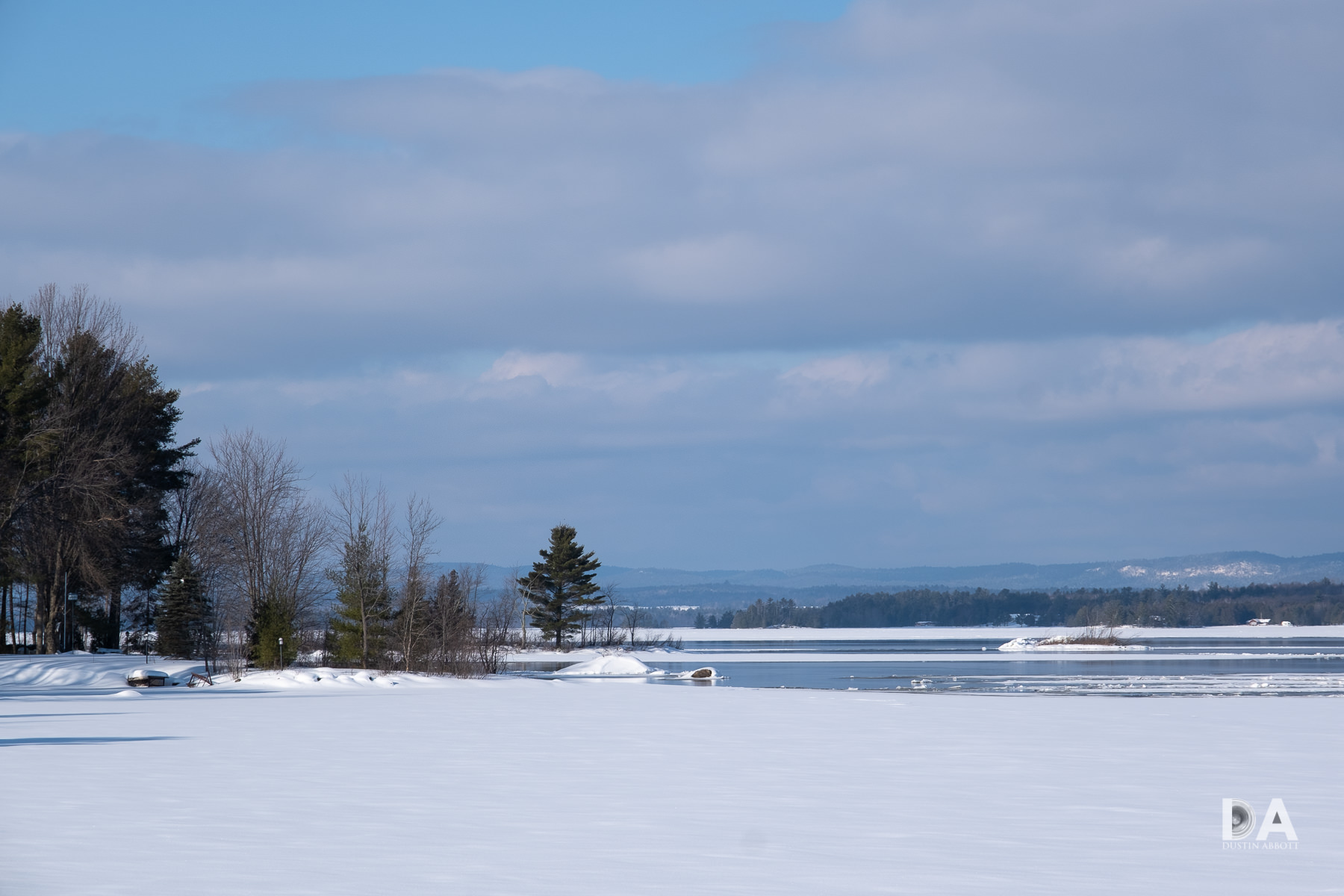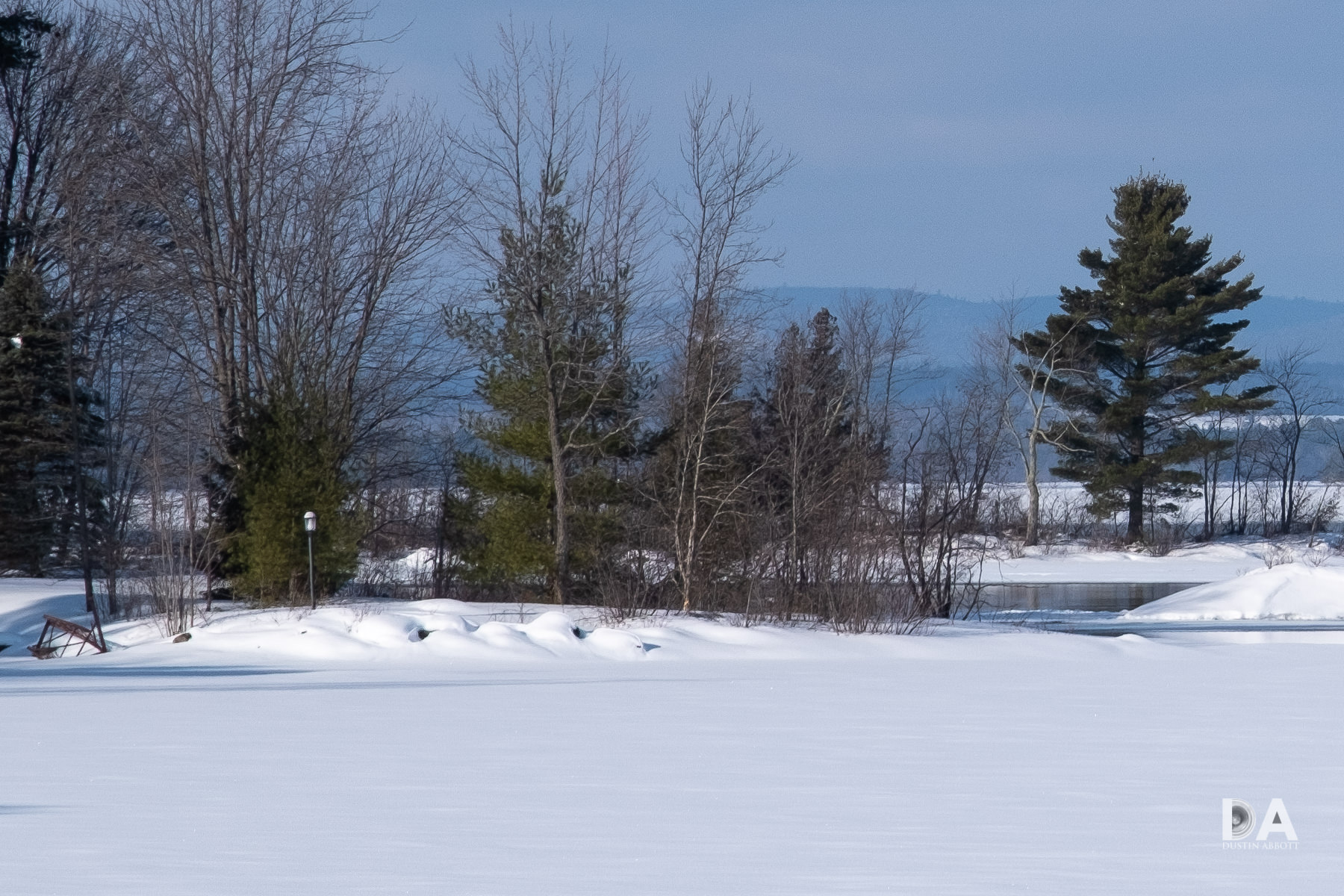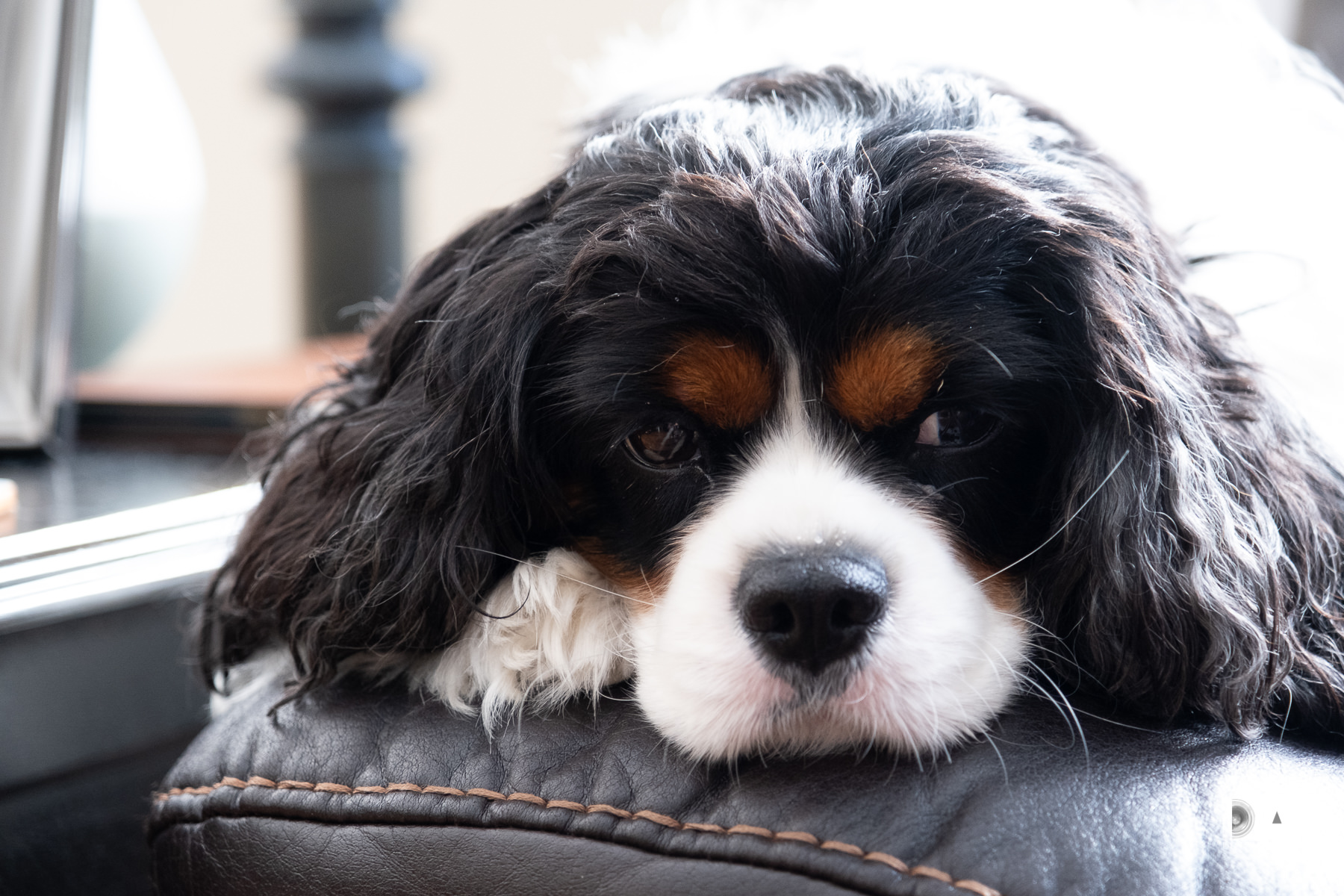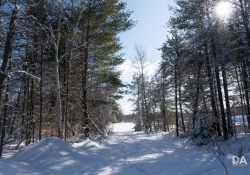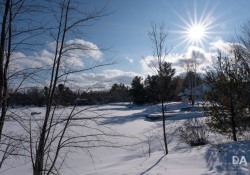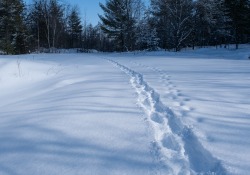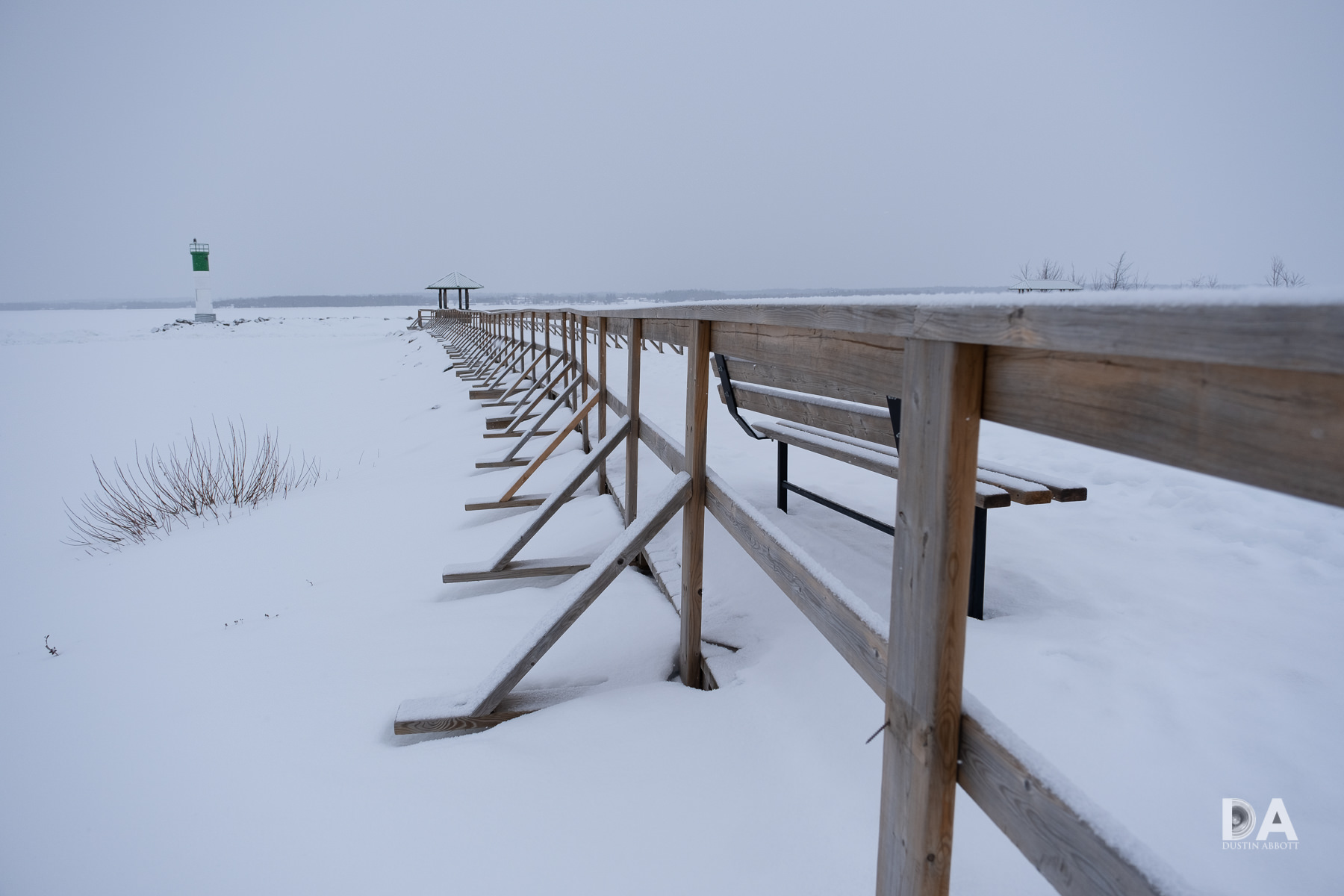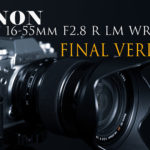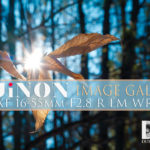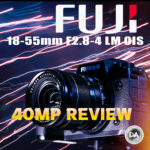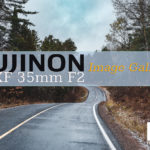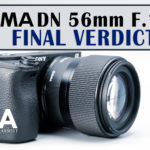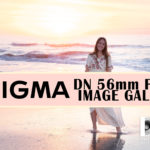Fuji shooters have had a binary choice between two standard zooms – the XF 18-55mm F2.8-4 OIS (my review here) and the XF 16-55mm F2.8 (my review here). One offered image stabilization, the other offered a weather-sealed build and larger maximum aperture. But now there is a third choice – the Fujinon XF 16-80mm F4 OIS which gives photographers the option of having both weather sealing and (incredibly good) OIS along with a broader zoom range, though at the price of a smaller maximum aperture. The XF 16-80mm F4 fills the lane often occupied by a 24-105mm lens in full frame, with an equivalent aperture of 24-120mm. Here’s what 16mm looks like:
and then same scene at 80mm:
That’s a very useful focal range that will encompass the vast majority of photography subjects. The 16-80XF will be the kind of lens that people stick on their cameras and leave it there because it can do everything with a fair degree of competence.
This is a compelling option if the lens bears out in real life. Stay tuned for my verdict of how well Fuji has done with executing this 5x zoom range lens. If you would like to watch your reviews, you can choose either my short format or long format video reviews below:
I’ve done this review on a Fujfilm X-T3 camera body. Thanks to Fujifilm Canada for the loaner of lens and camera!
Follow Me @ Patreon | My Newsletter | Instagram | Facebook | Twitter | Flickr | 500px
Fujinon 16-80XF Build and Handling
In many ways the 16-80XF takes the “Goldilocks” approach; not too big, not too small. Not too heavy, not too light. Just right. It slots nicely between the 18-55 and 16-55 lenses in terms of size and weight:
In the real world then means a lens that strikes a nice balance between build quality, performance, and size constraints, and is a very nice match for the Fujifilm X-T3 body I did the review on:
At 2.08″ (78.3mm) in diameter (with a 72mm front filter thread) and with a 3.5″ (88.9mm) in length, the 16-80XF is a moderately sized lens. The 15.52 oz (440g) weight is also moderate, and certainly shouldn’t be a deal-breaker for anyone, particularly when you consider that you are getting a nice degree of weather sealing. This includes a gasket at the lens mount along with internal seals throughout the lens (at 10 different points).
The 16-80XF employs Fuji’s hybrid approach to aperture where one has the option of utilizing a ring (with one-third stop detents) or putting the ring into A (automatic) where either the camera controls aperture or you control it via the camera.
There are nine rounded blades in the aperture, which is the same as the 16-55mm but higher than the seven blades of the 18-55mm.
The zoom ring is fair wide and nicely damped. The single inner barrel zooms out smoothly and without any wobble. The barrel extends a fair bit when the lens is fully zoomed out.
There are no switches on the barrel of the lens. Fuji handles the switch to MF in camera, and the OIS is “smart”, which means that it will detect what mode to use or whether to turn off altogether (if on a tripod). More impressive to me is the performance. It is rated by CIPA at 6 stops, which is the highest I’ve seen. I was able to routinely get shots at very low shutter speeds (the one below is 1/3rd second) without any evidence of camera shake (with a static subject, obviously!)
The focus ring is located nearest the front of the lens. Each of the three rings on the lens have a different texture and feel to them, so with a little familiarity it is easy to distinguish between them by feel. As all mirrorless lenses, this is a focus-by-wire system where input from the ring is routed through the focus motor rather than a direct coupling with the lens elements. If you are accustomed to quality manual focus action, you probably won’t be impressed by the action here. The weight feels fine, but there is little to no tactile feedback, and with the focus action set to “linear” within the the body the focus “throw” is extremely small on the wide end. You jump from minimum to infinity within no more than 90 degrees, so precision focus is difficult. The focus throw is longer (and a little easier to use) at 80mm. If you want amazing manual focus action, buy a manual focus lens!
One area of real strength is that the lens can focus down to 1.15′ (35cm) and has a very useful 0.25x magnification figure there. Image quality is fairly decent there, too, for casual work.
The 16-80XF has a constant aperture of F4, which is one stop slower than the F2.8 of the 16-55mm. The 18-55mm has an aperture advantage on the wide end (f2.8), though the F4 maximum aperture is shared over a lot of the zoom range. It’s that smaller maximum aperture that allowed Fuji to deliver this focal range in such a compact body, however.
The materials here are a mix of metals and engineered plastics. The body strikes a nice balance between weight, quality of build, and compactness. My overall score for the build of the 16-80XF is high.
Autofocus and Video Performance
The 16-80XF employs Fuji’s linear focus motors, which get the job done with speed and in silence. Real world (typical) focus changes will take place so quickly that you won’t really notice them happening. Even full “racks” from minimum to infinity are so fast as to be nearly undetectable. High marks here!
When filming, I saw similar high end performance in focus pulls at the wider end of the focal range. They were fast, smooth, and quiet. When shooting at the same distances at the telephoto end of the range I saw a bit more of the “stepping” that can be more obvious with Fuji camera/lens combinations. Overall, however, this is one of the better performances I’ve seen from a Fuji lens.
Focus accuracy in many situations was quite good. I was able to quickly and simply grab focus on objects even with a busier background beyond a foreground subject.
While Fuji doesn’t have an equivalent of Sony’s “Pet Eye AF”, I could get good results by just moving a focus point over the appropriate area:
Where I have to offer some criticism, however, is when employing Eye AF for portrait subjects. On a mild front, I noted that eye detect would sometimes have a little better focus on the eyebrow than the eye/lashes.
More troubling, however, is that when I had my son take photos of me (with good quality lighting and at various focus distances), Eye AF did not produce accurate results every time. Yes, the photographer was less experienced, and yes, I probably could have/would have gotten better results if I were behind the camera, but the point of Eye AF is to automate the process and take the guesswork out of it. Eye AF is not about the skill of the photographer; it is about the intuitiveness of the focus system, and the 16-80XF/X-T3 combination didn’t always pass the test.
If you look through those photos, you will find that while most of them are well focused, there are a few where focus is completely missed. That’s disappointing, as I’ve become accustomed to Sony and Canon mirrorless cameras almost never producing misses when Eye AF is employed. There were four misses out the twelve images in the little series, which is disappointing. With a more skillful photographer who is attentive to when focus is and is not right, this won’t be nearly as much a problem, though I pointed this out simply because I’ve found recently that I can hand off one of my Sony cameras in a similar situation and great pretty great results. Outside of this setting, however, my personal focus results were good.
Video footage looks very nice from the lens. The sharpness and contrast don’t wow you, per se, but the global look (which is what matters in video) of the footage is excellent. There is good color, saturation, and detail in the footage.
Even with the misstep with Eye AF, I would rate the focus performance I saw here among the top tier of what I’ve seen from the various Fuji lenses that I’ve reviewed.
16-80XF Image Quality
I will preface this section by noting the fact that a lens with a 5x zoom range that moves from wide to telephoto is going to have a few compromises, particularly in such a compact form. There are superzoom lenses with a much wider zoom range, but those lenses tend to be severely compromised optically. I’ve found that a 24-105mm lens on full frame represents about the limit of what a lens maker can do while still retaining what I would characterize is good image quality. Fuji has stretched that just a little here, and ironically the only real weakness in the optical performance is found in that extra 15mm!
The second note that I want to make is that it is essentially impossible to fully defeat the digital corrections to Fuji files, be they JPEG or RAW. It’s thus very hard to parse out what is optical performance and what is the result of digital corrections. I’m not sure that it matters at the end of the day, as you will only see the end result either way, and I feel like Fuji does one of the best jobs I’ve ever seen with those digital profile corrections. Everything looks pretty flawless in the vignette/distortion department. Here’s a quick look at what I saw with my test charts at both 16mm and 80mm:
The resolution profile is fairly typical, with good center and early mid-frame performance, but a noticeable drop off in contrast and resolution towards the outer edges of the frame.
There is a very obvious improvement when stopping the lens down to F5.6. Contrast vastly improves, and there is some additional resolution.
There isn’t a lot of additional sharpness to be realized by stopping the lens on down, so F5.6-8 represents the strongest edge to edge resolution for landscape purposes. Landscape images look good with excellent color, good contrast, and good sharpness (though corners aren’t as strong as the center).
The next marked area on the focal range is 22mm. The pattern is somewhat similar as before, though the lens is a little sharper in the middle part of the zoom range. Here are the center, mid-frame, and edge crops:
Stopping down to F5.6 shows a notable improvement:
The performance at 35mm is very similar, though you will spot some improved contrast and a bit more sharpness here. Here are the center, mid-frame, and edge crops:
A similar improvement is found at F5.6:
Likewise at 50mm, where performance is very similar to 35mm. Here are the center, mid-frame, and edge crops:
Once again, you can see some improvement at F5.6:
We’ve seen a pattern of consistent optical performance until this point, but at 80mm there is notable drop-off. You can see that while the center performance has less contrast, the mid-frame and edge results are fairly weak:
Stopping down to even F8 doesn’t make a radical difference.
80mm is never really sharp at any aperture, and you can tell that from real world results. Here’s an image and crop at 80mm, F8:
More typical compositions with the subject in the middle of the frame show better, though you can still tell there isn’t great acuity.
Something had to give, and in this case it was the resolution at 80mm.
Fortunately there aren’t really any other objections. One strong area is flare resistance, which is not typically a strength for a zoom lens like this. Even when panning across the sun and shooting video, I didn’t see too much ghosting. Performance is better on the wide end than on the telephoto end, though the result still wasn’t bad there.
I also didn’t really see an chromatic aberrations of either the lateral or longitudinal variety. Areas of high contrast are handled quite well.
Finally, I also felt like color rendition was very good from the lens. Colors are nicely saturated and have good contrast/punch. This will be a great travel companion, giving travelers many framing options without asking them to change lenses or pack very heavily.
If you’d like to see more images from the lens, check out the image gallery here. Overall I think Fuji has done what they needed to with this lens.
Conclusion
The winner here is consumers, as Fuji has now given the market three credible options for a general purpose zoom lens. While I personally find the 18-55mm somewhat overrated, many people love it. I did like the 16-55mm F2.8 quite a bit, however, though some will find it over-large and too expensive. The Fujinon XF 16-80mm F4 OIS strikes a nice balance that I think many photographers will appreciate. It is between the other two options in size, weight, and price, while offering up a bigger zoom range, weather sealing, and the more premium linear focus motors. It also has perhaps the best image stabilizer I’ve ever used, which is a huge asset for a general purpose lens.
Add to that the fact that the 16-80XF gives solid performance results, and you’ve got a formula that should be “just right” for a lot of shooters. At $799 USD, it isn’t cheap, but it’s only $100 more (at least in terms of MSRP) than the XF 18-55mm, though that lens is frequently discounted and is much less expensive when purchased in kit with a camera body. Optical performance at 80mm isn’t exceptional, and there were a few more misses than what I would like when using Eye AF, but I think the XF 16-80mm F4 OIS is a lens that will satisfy a lot of shooters. Once it goes on their cameras, it will probably rarely come off (particularly when traveling)…which is just what this kind of lens is designed for.
Pros:
- Well built lens with 10 seal points
- Good size and weight relative to zoom range
- Quiet, fast focus via linear motors
- Fantastic OIS with 6 stops of rated assistance
- Good center sharpness through much of the zoom range
- Well corrected aberrations – including vignette, distortion, and chromatic aberrations
- Good flare resistance
- Excellent color
- Good maximum magnification figure
Cons:
- Degraded performance at 80mm
- Eye AF can deliver inconsistent results on X-T3 for portraits
- Edge sharpness never quite as good as center
Purchase the Fujinon XF 16-80mm F4 OIS @ B&H Photo | Amazon | Amazon Canada | Amazon UK | Amazon Germany | Ebay
Purchase the FUJIFilm X-T3 @ B&H Photo | Amazon | Amazon Canada | Amazon UK | Amazon Germany | Ebay
Peak Design Slide Lite: Peak Design Store | B&H Photo | Amazon | Amazon Canada | Amazon UK
Peak Design Leash Strap: Peak Design Store | B&H Photo | Amazon | Amazon Canada | Amazon UK
BenQ SW271 4K Photo Editing Monitor – B&H Photo | Amazon | Amazon.ca | Amazon UK
Adobe Photoshop Creative Cloud 1-Year Subscription
Exposure Software X5 (Use Code “dustinabbott” to get 10% anything and everything)
Visit Dustin’s Amazon Storefront and see his favorite gear

Purchasing your gear through B&H and these links helps fund this website and keeps the articles coming. You can also make a donation here if you would like. Visit my Amazon page for some of my gear of choice! Thank you for your support.
Great News! I can now offer a 5% discount on all purchases at Amplis Foto, Canada’s Leading Photographic Supplier. Please enter discount code: AMPLIS52018DA in your cart. It is good for everything in your cart, and is stackable with other coupons, too! It will take 5% off your entire order! Proceeds go towards keeping this site going and providing you with new reviews!
Check me out on: My Patreon | Sign Up for My Newsletter | Instagram | Facebook | Twitter | Flickr | 500px | Google+ |
Use Code “DUSTINHDR” to get $10 off ($15 CDN) any Skylum product: Luminar, Aurora, or AirMagic
Keywords: Fujinon, Fuji XF, Fuji 16-80, Fujinon 16-80, XF, Fujinon XF 16-80mm, F4, F/4, Fuji, Fuji 16-80mm review, Fujinon 16-80 Review, Fujinon 16-80mm F4, OIS, Review, Dustin Abbott, Fujifilm, X-T3, Fuji X-T3, X-T3 Review, Fuji X-T30 Fujinon, Review, Hands On, Video Test, Sharpness, Autofocus, CA, Video AF, XF 16-80mm F4 OIS, 16-55mm, 18-55mm, Lens, Comparison, Test, Dustinabbott.net, Sample Images, Sample Video, Normal, Portrait, Travel, Canada, Winter




